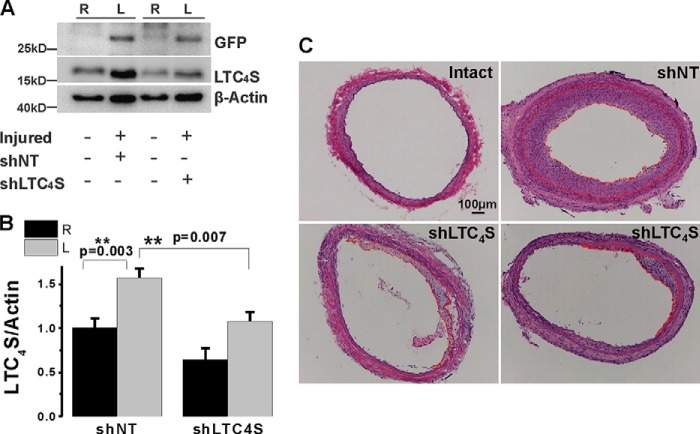FIGURE 4.
A, acutely isolated VSMCs from control carotids (right carotids; R) and balloon-injured carotids (left carotids; L) transduced with lentiviral particles encoding either shNT or shLTC4S were harvested and lysed at 2 weeks postinjury, and LTC4S protein levels were determined. In the injured vessel treated with shLTC4S, the increase in LTC4S expression induced by balloon injury was significantly attenuated. As a control of in vivo infection with viruses, GFP expression was detected only in vessels transduced with lentiviruses (left carotid), indicating local and efficient infection with lentiviral particles. B, bar graph with statistical analysis of LTC4S protein expression from six independent in vivo experiments. No significant difference in intact carotids was observed between the two groups. Error bars represent S.E. C, images of rat carotid artery cross-sections from intact (control) vessels and from injured and shRNA-treated vessels harvested 2 weeks after injury. After injury, the vessel wall is significantly thicker, vessel size is bigger, and lumen is much smaller compared with the intact vessel, indicating both outward and inward remodeling of the artery in response to balloon injury. When treated with shLTC4S (the two lower panels show sections from two independent rats), neointimal hyperplasia was largely attenuated, and the lumen size was normalized by comparison with shNT-treated vessels. Scale bar, 100 μm. **, p < 0.01.

